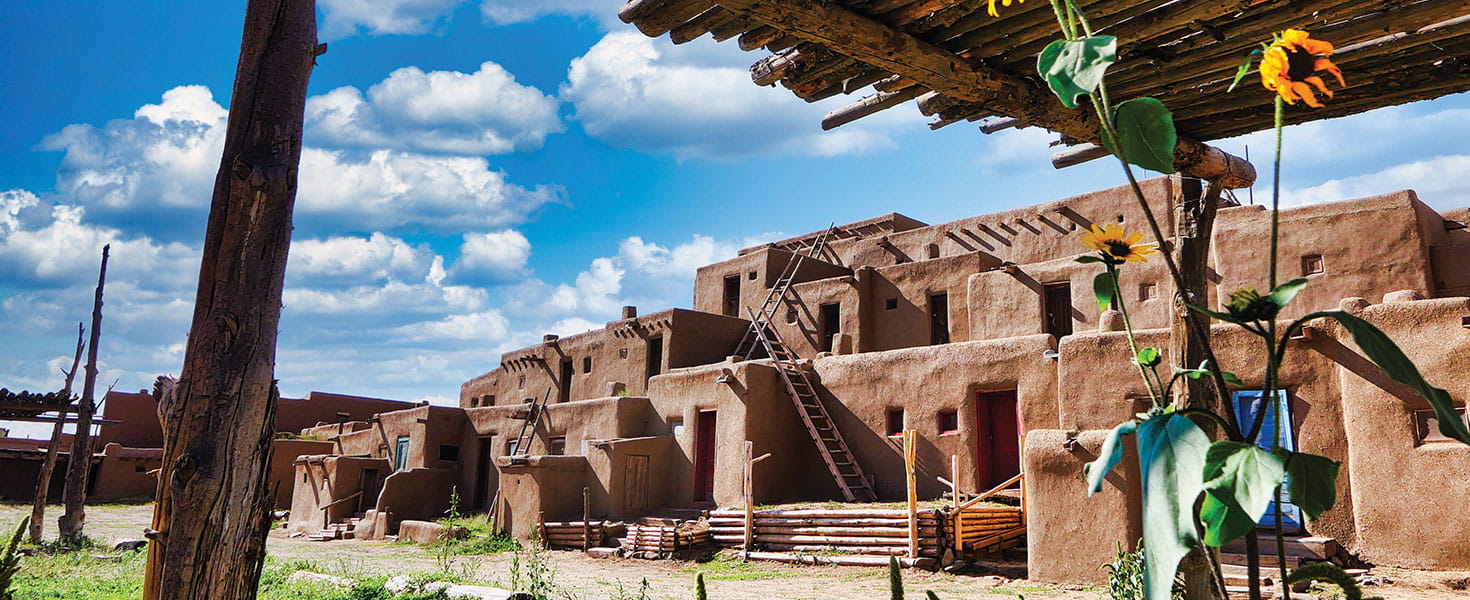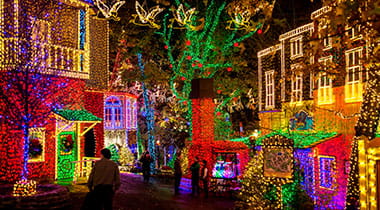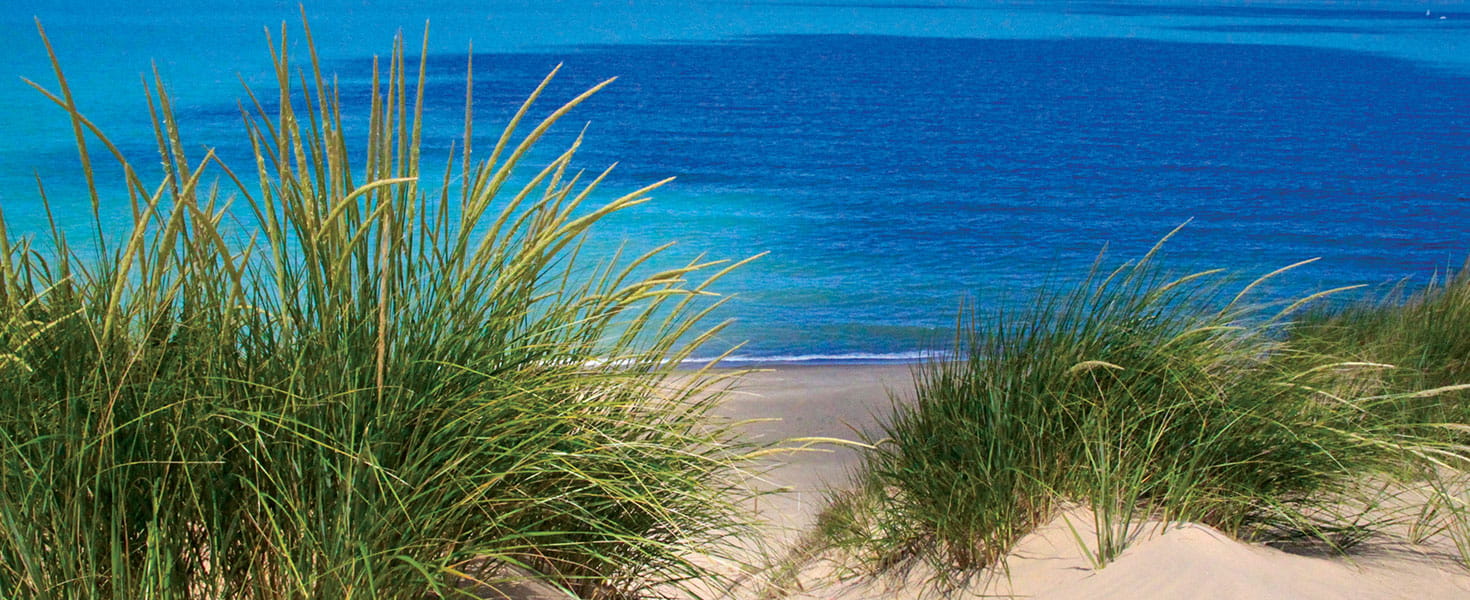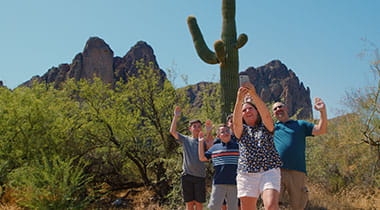Taos Pueblo. Photo By Renee Sklarew
Ever since my husband, Eric, and I met 30 years ago, we’ve bonded over our love of travel, and nothing deepens this connection better than a road trip. We had visited New Mexico briefly years ago and fell in love with the landscape. We always vowed that we would return. So, this past September, we flew into Albuquerque International Sunport, rented an SUV and set off on a weeklong exploration of northern New Mexico.
From Albuquerque, we drove for two-and-a-half hours to the northernmost point on our itinerary: Taos. After three nights there, we made our way back south to Albuquerque, stopping along the way to visit Los Alamos and Santa Fe.

TRIBAL NATIONS
As we journeyed north that first afternoon, the rugged desert plains gradually shifted to the undulating peaks of the Sangre de Cristo Mountains. We arrived in Taos under a star-filled sky and checked into Hacienda del Sol, a bed-and-breakfast with adobe cottages outfitted in Mexican Talavera tiles, kiva fireplaces and geometric tapestries.
Our first excursion was to Taos Pueblo, the most well-known of New Mexico’s tribal settlements and a UNESCO World Heritage Site. It’s a peaceful village of golden adobe homes, willow trees, icy brooks and pine-forested hills. No wonder artist Georgia O’Keeffe was inspired to paint here.
Constructed between the years 1000 and 1450, the buildings of Taos Pueblo range from short and squat to those that are five stories high and accessible only by ladder. The settlement remains much as it did when Spanish explorers arrived in northern New Mexico in 1540. Some 150 tribal members still live within the pueblo, while others return for tribal ceremonies. Ducking indoors, we met members selling handmade pottery, leatherwork and jewelry.
After exploring the pueblo, we set out for the nearby Rio Grande Gorge, known for its breathtaking canyon views and its trails lined with scrub grasses, cactuses and wildflowers. The wind whipped our faces as we walked across the Rio Grande Bridge, spanning 650 feet above the roiling Rio Grande. We refreshed after our hike with a beer at Taos Mesa Brewing and visited Taos Plaza, where I bought Native-made turquoise earrings for our daughters.
At dawn the next day, we drove 30 minutes to reach Taos Ski Valley, a four-season resort with numerous epic hiking trails. Our goal was to conquer Wheeler Peak Summit, which, at 13,167 feet, is New Mexico’s highest mountain. As we hiked, the dry air turned cooler, and the fragrance of juniper and piñon pine tickled our noses. We stopped to rest at Williams Lake, an iridescent remnant of a glacier that had receded 10,000 years ago.
Breathing hard from the altitude, we scrambled down the mountain and rewarded ourselves with bratwurst and chili at The Bavarian, an alpine restaurant in Taos Ski Village. When Eric congratulated me on my mountaineering prowess, I joked, “Next time, we take the chairlift.”
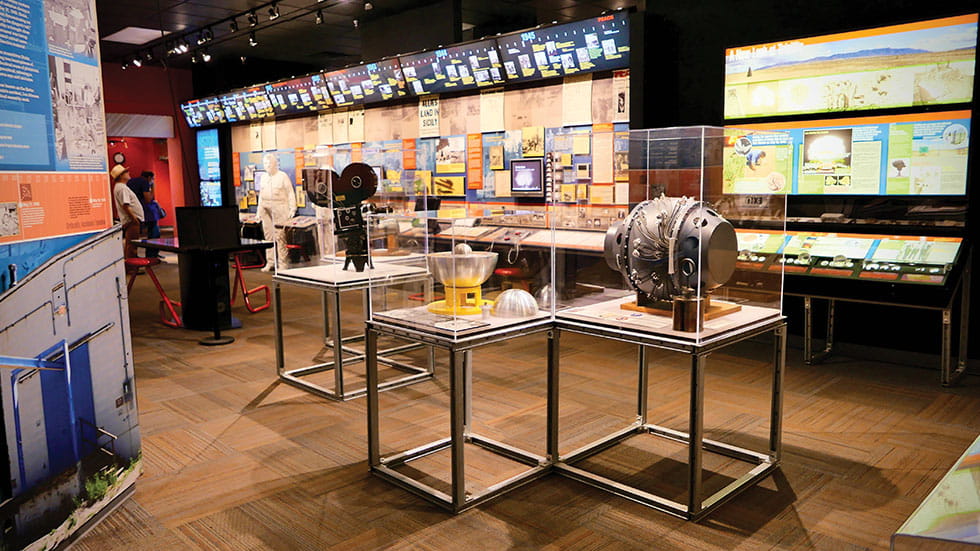 Bradbury Science Museum displays artifacts from WWII. Photo By Renee Sklarew
Bradbury Science Museum displays artifacts from WWII. Photo By Renee SklarewHISTORIC LOS ALAMOS
From Taos, we traveled 60 miles southwest to arrive at Los Alamos, a once-secret town where hundreds of scientists developed the first atomic weapons. Here, artifacts from the World War II Manhattan Project have been restored by the National Park Service. We toured the former home of physicist Robert J. Oppenheimer, recently depicted in the eponymously named Academy Award-winning movie, and Fuller Lodge, once used by scientists and military personnel.
We also visited the Bradbury Science Museum, which houses objects from Los Alamos National Laboratory and provides a timeline of the American experience in World War II, starting with the attack on Pearl Harbor and including the assembly, testing and launch of the atomic bombs.
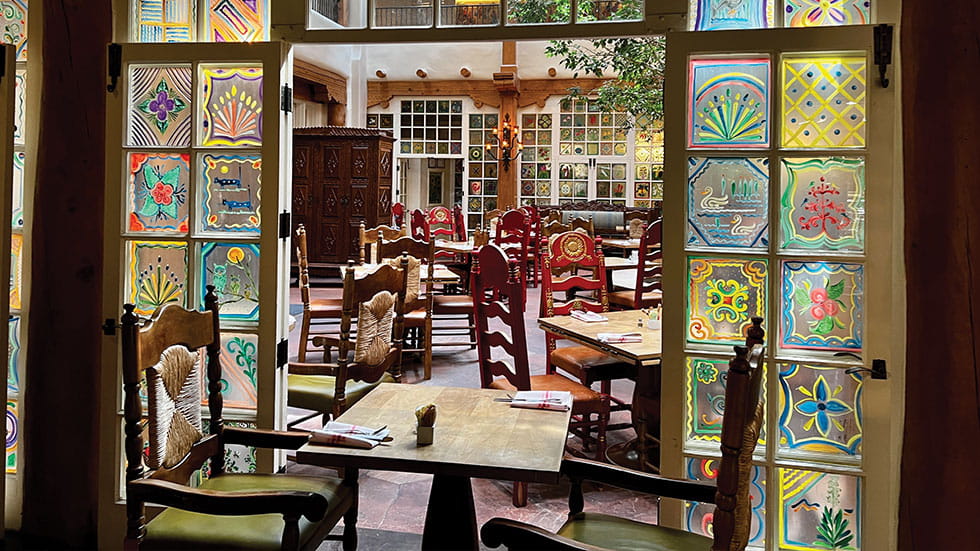
ARTSY SANTA FE
We continued our drive some 40 minutes south to Santa Fe, a city known for its stunning architecture and world-class shopping and dining. We checked into the Hotel Santa Fe in the Railyard Arts District, a quiet neighborhood with a cluster of art galleries. The city’s only Native-owned hotel, it’s adorned with Native art, and on some evenings, guests are treated to a flute concert by members of the Picuris tribe.
The hotel’s front desk staff recommended that for dinner we try Tomasita’s, a restaurant famous for its frozen margaritas and sopapilla bread with honey. Locals know best. We savored our delicious dinner serenaded by an all-women mariachi band.
On the first morning of our three-night stay in Santa Fe, we joined Ana Pacheco for a tour of Santa Fe’s key landmarks. The City Historian of Santa Fe and author of eight books, Pacheco can trace her New Mexican ancestors back 328 years.
During our walk, she pointed out the Palace of Governors, the 100-year-old La Fonda Hotel and the New Mexico State Capitol, which displays contemporary works by New Mexican artisans.
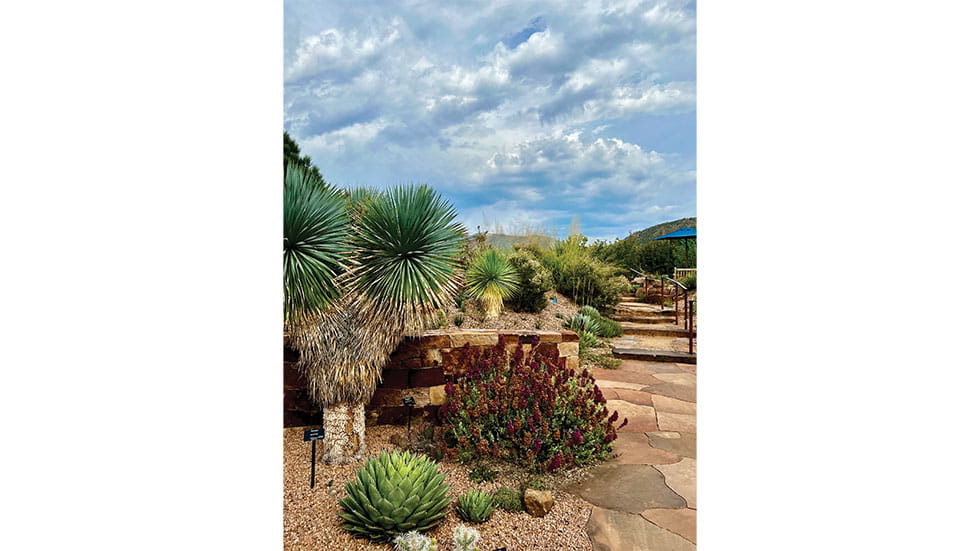
“Santa Fe’s official founding date is 1610, making it the oldest capital city in the US. It has served as capital city of this region under three governments: Spain, Mexico and the US,” Pacheco says. “From architecture to language and food, I don’t know of another state capital with such diverse cultural influences.”
After our tour, we returned to Santa Fe Plaza, the city’s central marketplace. It was the first day of the Fiesta de Santa Fe, a festival established in 1712 that celebrates the region’s heritage with traditional dancing, crafts and food. The aroma of grilled chilis tantalized our taste buds, and we ordered chicken enchiladas with both salsa roja and salsa verde, or “Christmas,” as our waiter called it.
That afternoon, we visited the Georgia O’Keeffe Museum Galleries. The breadth of its collection demonstrates the trajectory of O’Keeffe’s work and contains personal treasures such as the snail shells and cow bones that she collected. Walking through the hushed corridors, I stopped to admire O’Keeffe’s bold desert paintings. They recalled the dramatic and colorful New Mexican landscape we’d been admiring throughout our trip.
An avid gardener, Eric wanted to see the Santa Fe Botanical Garden, a sanctuary in the city where songbirds whistled their greetings and sunshine filtered through the fruit trees. We found a bench among the big-headed yucca trees. It was a fine place to rest.

THE ALLURE OF ALBUQUERQUE
A one-hour drive from Santa Fe brought us to Albuquerque’s Old Town, a neighborhood with blocks of Pueblo-style buildings and adobe brick sidewalks. We stopped in stores and galleries and happened upon a quirky souvenir shop celebrating the AMC TV show Breaking Bad, which was set and filmed here.
We also toured the church of San Felipe de Neri. Built in 1793 and in continuous use since then, it’s Albuquerque’s only surviving Spanish colonial building.
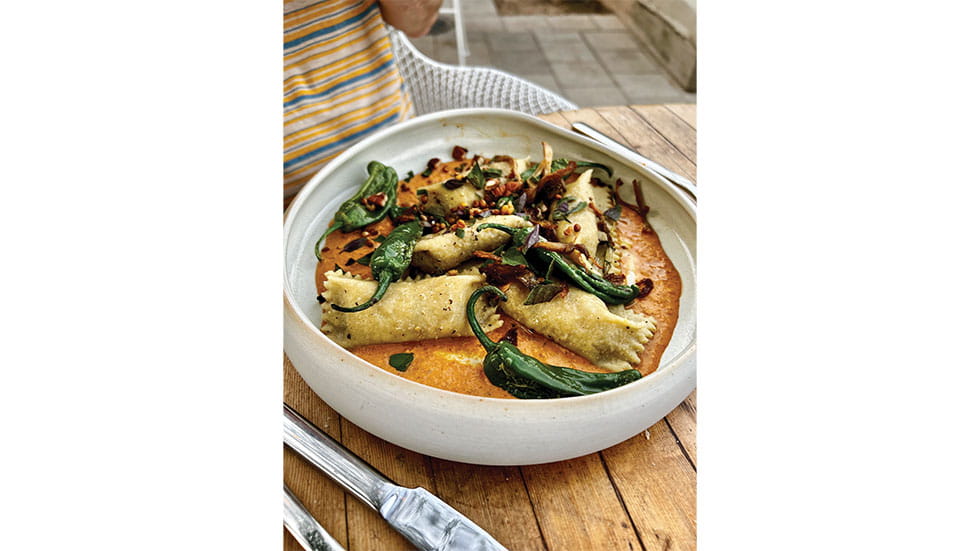
We spent our final night at Los Poblanos Ranch, a working farm and inn with mesmerizing views of the Sandia Mountains. Sandia means watermelon in Spanish, and, indeed, the mountains take on a rosy glow at sunset. During our farm-to-table meal at the inn’s restaurant, Campo, we began planning a future road trip—this time to southern New Mexico, where there’s more enchanting scenery to explore, artwork to admire and enchiladas to enjoy.








